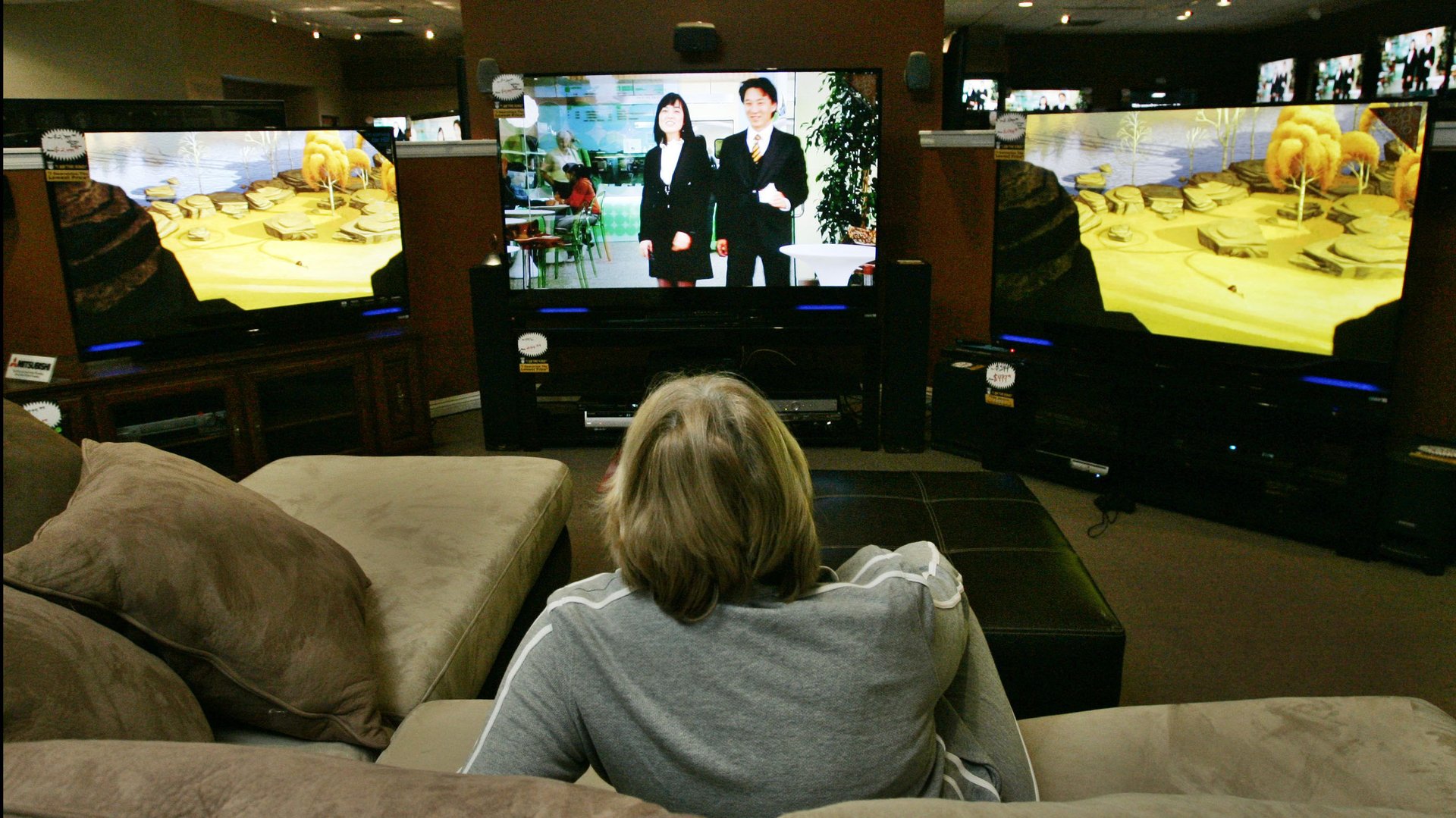Streaming’s live-TV bundles aren’t actually saving cord-cutters money compared to cable
The big promise of streaming’s new live-TV packages was simple: you could get most of your favorite channels for less than the cost of cable. It’s what drove millions of Americans to consider cutting the cord, as they say, and trade their old cable-TV packages for shiny, new streaming alternatives like SlingTV and YouTube TV.


The big promise of streaming’s new live-TV packages was simple: you could get most of your favorite channels for less than the cost of cable. It’s what drove millions of Americans to consider cutting the cord, as they say, and trade their old cable-TV packages for shiny, new streaming alternatives like SlingTV and YouTube TV.
Research suggests that, nearly three years after the first virtual pay-TV provider, SlingTV, arrived, these packages aren’t actually saving people money.
In 2016, swapping a traditional pay-TV package from a cable provider like Comcast or Charter for a virtual pay-TV subscription through an online provider like SlingTV knocked about $20 off the average US customer’s cable bill, found M Science, a research firm that tracks consumer transaction data. The savings by November 2017, which also included new live-TV packages from providers like DirecTV Now, Hulu and YouTube TV, was around $16.
When paired with the cost customers continued to pay their cable providers for things like internet, phone, or additional TV packages, the savings vanished altogether. The average virtual pay-TV subscriber paid about $15 more in aggregate than the average cable customer in 2017, based on M Science’s data.
That’s in part because customers can often get a better deal bundling two or three services from a cable provider, like TV, internet, and home phone service, than paying for internet alone. It’s marketed by cable operators as the double or triple play. “The cable companies will incentivize aggressively for bundling and penalize for unbundling,” said Corey Barrett, senior analyst for technology, media, and telecom at M Science. “They’ll have attractive rates for a double-play bundle and if you decide to go to broadband only, it’s going to cost more than broadband bundled with other services.”
Some customers also boost their broadband speeds when they switch over to streaming alternatives to support the higher usage. That adds to the bill, too.
To be sure, M Science’s data is at the transaction level; it shows the lump sums customers were paying the providers. People have found savings changing services, renegotiating their packages, mix-and-matching plans, or combining skinny bundles with an HD TV antenna, for example.
SlingTV customers saw the smallest increase in spending compared to cable alone, with a lift of about $5 last year. The service’s basic plan is cheaper than rivals DirecTV Now and Hulu, but also has fewer channels. Some people may also choose to spend more to customize their channel lineups on a package like SlingTV, add premium channels like HBO onto DirecTV Now, or buy features like extra DVR storage on Hulu.
Saving money isn’t the only reason people choose online live-TV providers over regular cable. The idea of being able to customize packages and only pay for channels and services you want is attractive to customers after decades of being forced into bundles with hundreds of channels they never watch. These virtual pay-TV providers allow you to login and watch from almost any screen, anywhere, rather than being tethered to a living room set-top box. And some, like Hulu’s live-TV offering, have other compelling value propositions like the inclusion of Hulu’s robust on-demand library.
Update (7:20pm ET on Jan. 19): This post was updated with additional details on M Science’s methodology for clarity.